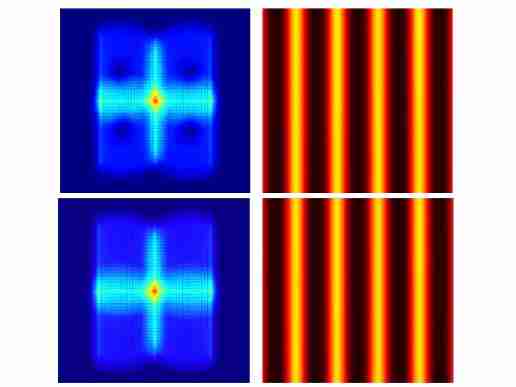

The production of tiny structures of current and future computer chips use light which, with a wavelength of just over 10 nanometers, already tends towards X-rays. To be precise, this is extremely ultraviolet light, or EUV for short.
As with X-rays, this poses a crucial problem. The extremely high-energy radiation penetrates almost every material, unfortunately also the mirrors required for lithography, with which the light is precisely directed in order to obtain the electronic circuits.
Of the laser light emitted by a CO2 laser, only 2 percent of the energy ultimately reaches the wafer. So there is plenty of potential for improvement.
At the Okinawa Institute of Science and Technology a method was presented to replace the previous, very inefficient technology. Because EUV light cannot simply be directed using conventional optical devices, complicated arrangements with crescent-shaped mirrors are required, which typically require ten reflections.
Each reflection significantly reduces the energy of the light. It therefore seems only logical to radically reduce this setup to just two mirrors. Among other things, this simplification is made possible by two parallel, non-interacting light sources, both of which shine onto the photomask for lithography from opposite angles.
Both mirrors have a hole in the middle in order to achieve the same precision of the laser light as with the previous method. Currently, a resolution of 10 nanometers should be possible. With further optimizations, 7 nanometers, eventually 5 or 2 nanometers would be conceivable.
The energy savings resulting from this simplification are considerable. Instead of a 200 watt laser, only 20 watts of power are required. That would be a tenth of the previous power requirement, which would reduce the power required for a whole chip factory from around 1 megawatt to 100 kilowatts.
According to the paper, there would be further savings. Smaller, weaker lasers are of course cheaper to manufacture, but also cheaper to maintain. This also applies to the entire further construction.
The costs for electricity, technology and operation could be significantly reduced, meaning that computer chips could also be produced locally away from huge factory facilities. Chip crises with noticeable supply bottlenecks, such as those that recently occurred between 2020 and 2022, would then be much less realistic.
The above is the detailed content of Ten times better: Revolutionary new chip production technique could save energy and money. For more information, please follow other related articles on the PHP Chinese website!




